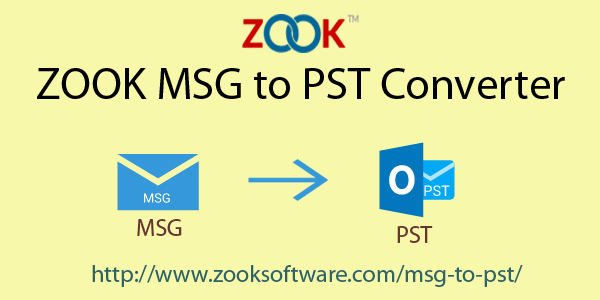

Ten ways for successful cloud-based ERP transition from on-premise ERP
Planning to shun your grandfather’s ERP for the very new, cost-effective and flexible ERP- The cloud ERP? Wise move! Follow the steps shared by us in the blog to make this move really a wise one.
Wednesday May 02, 2018,
8 min Read
Cloud-based ERP systems are gaining the popularity in today’s highly competitive business scenario—especially among small to midsize businesses. A lot of organizations think of migrating to the Cloud for cost saving reasons. Many are opting for cloud-based solutions because of enhanced data security and much needed flexibility to execute their day to day operations from anywhere, anytime and on any device.
While on-premise ERP solutions are more customizable, and offer greater control over data, Cloud ERP is undoubtedly a cheaper, up-front, stable, and easy to use model for running businesses smoothly. Manufacturers are choosing the convenience and cost-effectiveness and hence are turning their path towards the road of transition from on-premise to on-cloud. Although, the migration isn’t as easy or as simple as it seems. It comes with its own set of challenges. Worry not! Here are some handy tips to execute a successful migration from on-premise to on-cloud.
1 Identify your Goals: First of all, answer the big fat “Why?” that will help you clearly define your objectives for the migration. Since the migration involves massive complexity, typical nature, and a lot of resources, you need solid reasons to justify the big switch.
Outlining clear goals will help everyone, from management to employees stay on the same page and have a clear vision of post-migration scenario.
2 Analyze your Current Situation: Exhaustive brainstorming by the team involved is needed at this step. Crucial decisions on various parameters like current IT infrastructure, cost incurred and resource utilization is taken. It might be possible that your current IT environment is unfit for cloud and some of your applications are not compatible on cloud servers. Rigorous SWOT analysis will help you to determine the key working areas. You must ponder on following points:
a.What kind of networking environment you have and how you want to be after the migration?
b.What kind of data storage methods you use currently?
c.How much will be the approximate cost incurred?
d.Which applications you need to migrate over the cloud and which ones will remain functional on the on-premise ERP?
e.And in what order the applications will be migrated over the cloud?
This assessment will help you determine where you stand now and in which direction you need to steer through.
3 Choosing the Right Cloud Platform: The suitable cloud platform is yet another concern for the company owners. Based on the unique needs and unique processes of your business, you should choose from public, private or a hybrid cloud solution.
Public clouds are extremely flexible, easy to set up, and cost-effective, but let you have less control over your data. Since data servers are managed by a third party, it is unsuitable for sensitive data industry, like banking and healthcare.
Private clouds are best suitable for high data security and low volume applications. Since data is only accessed by a single client, it allows companies to customize the cloud environment like arranging the storage and networking components according to their liking. Due to such privileges, the cost of deploying a private cloud comes a little more than public cloud.
Whereas, if you have a complex mix of operations and applications, a hybrid cloud platform is just the right solution for you. It combines the best of both public as well as private cloud into one package. Because, you can easily pick the desired components from both the options, you can find the ideal balance of cost, security, data storage, and agility demanded by your company.
4 Selecting the Suitable Cloud vendor: Based on the industry experience and the customer reviews, you must select that vendor who is the best fit for your requirements. Ensure that the vendor have worked in a similar environment or industry as yours previously. It is always better to trust on the certified cloud solution provider and the one who assures best in class data security methods. Ask for their past cloud migration experience, and get in touch with the reference for an actual feedback. It is imperative to discuss the product offering with the help of a live demo, so that you can wisely judge the capabilities of the product as well as consultants.
5 Finalizing the Cloud Components & Budget: The existing IT infrastructure can act both as a liability as well as an asset. In case the components like monitors, servers, databases, and networking equipments can be used with the new cloud-based solution, it might save an additional expenditure, but if you have to discard all that completely then it may become an additional headache. The application, platform and the infrastructure must be in perfect synchronization to draw the most out of the cloud-based migration.
Once you have finalized the platform, vendor and desired customization, it’s time to assign the allocated finance for the project. Stage-wise funds breakdown must be decided along with the vendor team in order to avoid any miscommunications and disagreements at the later stage.
6 Design a Blueprint: Planning is the stepping stone towards success, therefore you must be all set with a working plan to face any twist and turn during the entire course. Planning involves deciding on what is to be done, when is to be done and how is to be done. Initially, realignment of resources and workload sharing must be discussed with the entire team. Finally, who is responsible for what must be allocated by the respective managers. Also, ensure that the tasks are assigned with a stipulated deadline and a regular monitoring of the progress must be done to keep derailment at bay.
7 Data Backup: Get a complete and reliable data backup of your servers, databases, and other equipments so that nothing is lost during the migration. Data backups should be created both at on-premise as well as on cloud systems to make everything doubly sure. Check that the vendor team is well versed in data batching, replication and backups. You must also encourage the involvement of your team with cloud specialists, developers and system architects so that they gain skills for such migrations in the future.
8 Project Execution & Deployment: When you have everything ready by your side, you know how to go about it. So just do it. Step-wise carry out the implementation strategies along with making the IT environment cloud-ready.
Carefully upload the Cloud ERP application on the designated infrastructure to enable cutting-edge functionalities of a cloud ERP solution. Finally, perform the data migration under expert guidance so that unwanted circumstances like configuration failures are avoided. If you are migrating heavy data, then a virtual private network might be useful for updated and accurate dataset over the cloud.
9 Go Live: Post validation and verifying the acceptance tests, the new system can be made live. Various approaches can be adopted as per vendor suggestion and type of data dependencies your company has.
a.The Big Bang Rollout: This approach has the capacity to make or break the entire project. Abruptly switching over to the new system, shutting down the legacy ones at once is called the big bang rollout. Extensive testing is done beforehand and is performed only when everything is made sure by the subject matter experts. It can be risky at times because everything goes live at the same time.
b. Phased Rollout: In this approach, rollout is made in smaller proportions, department by department wise. It is a comparatively safe approach, but certainly consumes time efforts and money.
c. Parallel Rollout: With the parallel approach, employees become functional on the new system along with working on the legacy one. However, in order to avoid confusion and data mismatch, perfect sync must be established between both the systems.
10 Handover and Training: After a successful go-live operation, the new system is handed over to your staff for the independent running of business processes.
Though not an elaborate training is required in the case of cloud-based migration still a documented know how’s must be demanded from the vendor. This might prove helpful for future references and eliminates dependencies on customer support. The training course also helps in developing a better acceptance amongst the employees and smoothens the change management.
Your business can transform into a money turner because of the innumerable benefits of the cloud ERP solution, but the migration experience might not be a pleasant one if you are unprepared and not supported by experts. The above checklist will help you execute a successful migration from an on-premise ERP to cloud-based ERP.
One such exceptional cloud ERP provider is BatchMaster Software Pvt. Ltd. Having a rich experience of over 30 years in the ERP arena, BatchMaster is well aware of the potential challenges of cloud-based migrations and their best plausible solutions.



